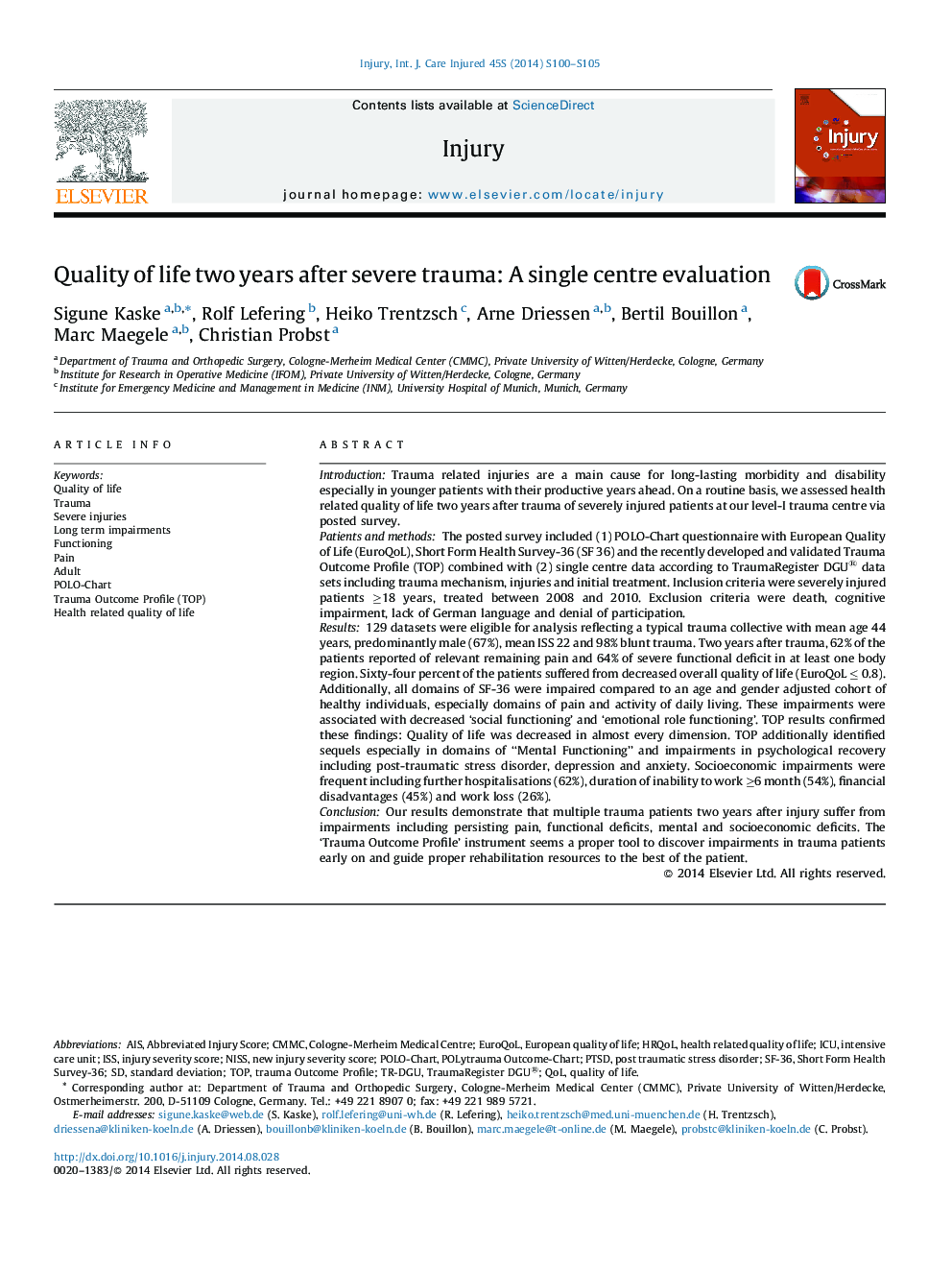| کد مقاله | کد نشریه | سال انتشار | مقاله انگلیسی | نسخه تمام متن |
|---|---|---|---|---|
| 3239913 | 1206024 | 2014 | 6 صفحه PDF | دانلود رایگان |
IntroductionTrauma related injuries are a main cause for long-lasting morbidity and disability especially in younger patients with their productive years ahead. On a routine basis, we assessed health related quality of life two years after trauma of severely injured patients at our level-I trauma centre via posted survey.Patients and methodsThe posted survey included (1) POLO-Chart questionnaire with European Quality of Life (EuroQoL), Short Form Health Survey-36 (SF 36) and the recently developed and validated Trauma Outcome Profile (TOP) combined with (2) single centre data according to TraumaRegister DGU® data sets including trauma mechanism, injuries and initial treatment. Inclusion criteria were severely injured patients ≥18 years, treated between 2008 and 2010. Exclusion criteria were death, cognitive impairment, lack of German language and denial of participation.Results129 datasets were eligible for analysis reflecting a typical trauma collective with mean age 44 years, predominantly male (67%), mean ISS 22 and 98% blunt trauma. Two years after trauma, 62% of the patients reported of relevant remaining pain and 64% of severe functional deficit in at least one body region. Sixty-four percent of the patients suffered from decreased overall quality of life (EuroQoL ≤ 0.8). Additionally, all domains of SF-36 were impaired compared to an age and gender adjusted cohort of healthy individuals, especially domains of pain and activity of daily living. These impairments were associated with decreased ‘social functioning’ and ‘emotional role functioning’. TOP results confirmed these findings: Quality of life was decreased in almost every dimension. TOP additionally identified sequels especially in domains of “Mental Functioning” and impairments in psychological recovery including post-traumatic stress disorder, depression and anxiety. Socioeconomic impairments were frequent including further hospitalisations (62%), duration of inability to work ≥6 month (54%), financial disadvantages (45%) and work loss (26%).ConclusionOur results demonstrate that multiple trauma patients two years after injury suffer from impairments including persisting pain, functional deficits, mental and socioeconomic deficits. The ‘Trauma Outcome Profile’ instrument seems a proper tool to discover impairments in trauma patients early on and guide proper rehabilitation resources to the best of the patient.
Journal: Injury - Volume 45, Supplement 3, October 2014, Pages S100–S105
